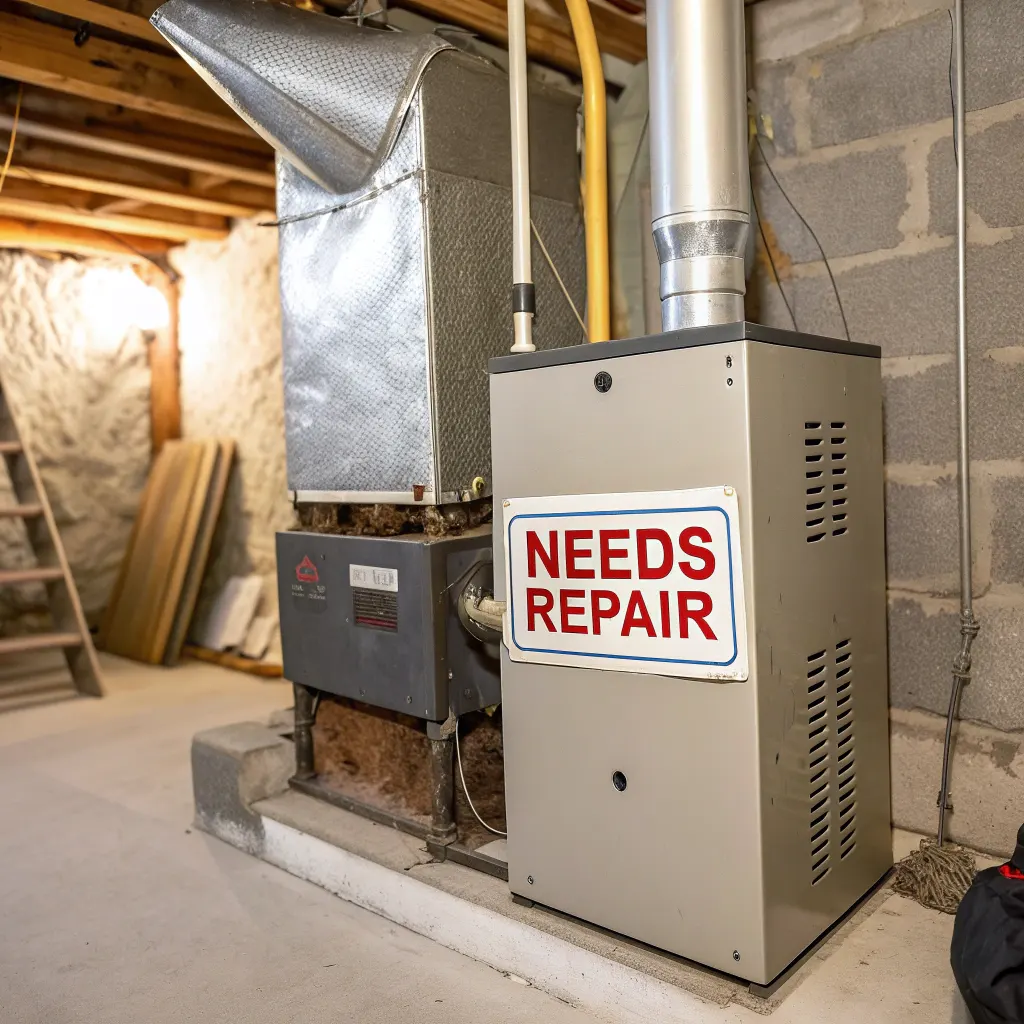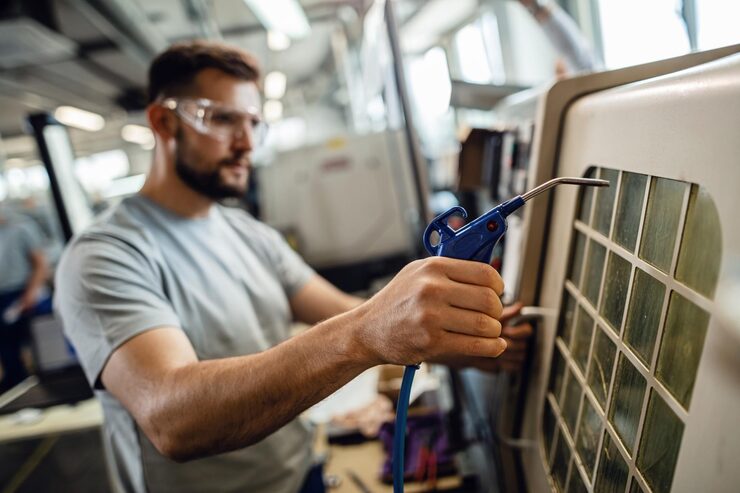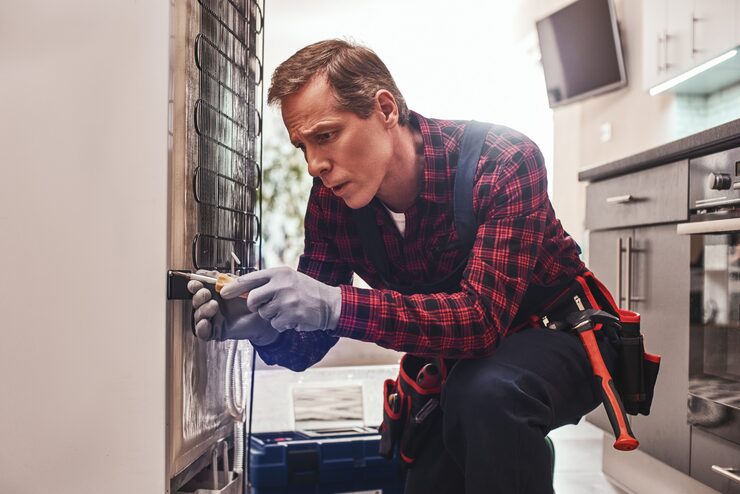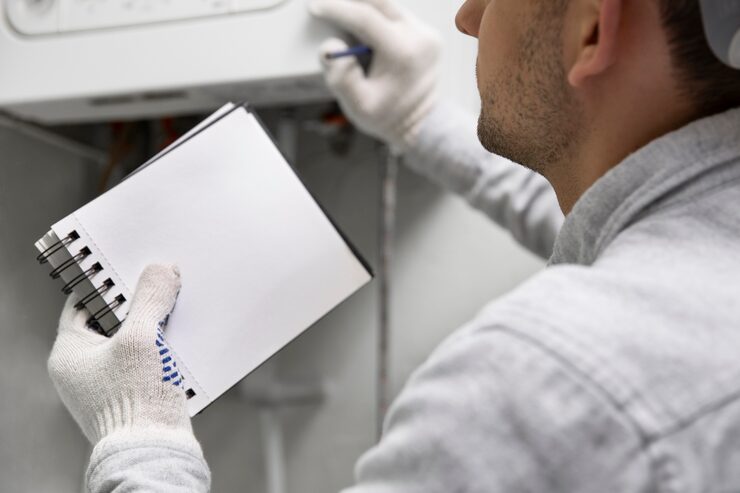Ontario winters are infamous for their frigid temperatures, with snowstorms and sub-zero winds turning everyday life into a challenging experience. As the months turn colder, your furnace becomes your most essential home appliance, ensuring that you and your family stay warm and safe. But what happens if your furnace isn’t in peak condition when you need it most? The last thing you want is to wake up to a freezing house in the middle of a snowstorm, only to find that your furnace has stopped working.
The good news is that many furnace problems can be prevented with early detection. Whether it’s a minor malfunction or a more serious issue, identifying the signs your furnace needs repair before the cold sets in will save you from unexpected breakdowns, high repair costs, and the inconvenience of being left in the cold. This article explores the most common signs your furnace might need a repair or maintenance service, allowing you to take action early.
Struggling with Furnace Issues Before Ontario’s Winter? Act Now!
Don’t let furnace troubles ruin your winter comfort. For expert Air Quality Services Ontario , contact us today to keep your home warm and healthy.
📞 Call Now: +1 (647) 967 4911Why Furnace Maintenance is Essential Before Ontario’s Winter
Ontario winters are often relentless, with temperatures frequently dropping well below freezing. For many homeowners, the furnace is the only barrier between them and the bone-chilling cold outside. Given the severity of the winter weather in Ontario, having a well-maintained furnace is not just a luxury—it is a necessity.
Your furnace needs to be in top working condition before the first signs of snow and cold temperatures hit. Failing to perform maintenance or overlooking small signs of trouble can lead to larger, more expensive problems. In the worst-case scenario, a breakdown can leave you without heat during a blizzard, which can have serious health and safety consequences, particularly for vulnerable family members such as the elderly, infants, or individuals with chronic health conditions.
By knowing what signs to look for, you can ensure your furnace is operating efficiently, saving money on energy bills, avoiding emergency repair costs, and keeping your home safe and warm.
1. Strange Noises Coming From the Furnace
One of the first signs that your furnace may need attention is unusual or loud noises. A properly functioning furnace operates quietly and efficiently, but when it starts making strange sounds, it’s often an indication of an underlying issue. Ignoring these noises can lead to more significant problems, including costly repairs or system failure.
Types of Furnace Noises and Their Meaning
- Banging or Popping Noises: If you hear loud bangs or pops when your furnace turns on, it could be due to delayed ignition. This occurs when gas builds up in the burners before ignition, leading to a small explosion once the burners light up. A buildup of gas is a serious issue that should be addressed immediately to avoid fire hazards.
- Squealing or Screeching: A high-pitched squeal often comes from the blower motor or fan belt. Over time, these components can become worn out, resulting in poor airflow and higher energy consumption. If the squealing persists, it may be necessary to replace the motor or belt to restore proper function.
- Rattling or Clunking: Loose parts, like the fan or the ductwork, can lead to rattling or clunking sounds. This could indicate a broken or misaligned component that needs to be fixed before it causes more damage to your furnace or other parts.
- Whistling or Hissing: A hissing or whistling sound might be due to a leak in the furnace or the ductwork. Leaks in your system can lead to inefficient heating and higher energy bills. Sealing these leaks promptly can improve furnace performance and save money on your heating costs.
Ignoring these unusual noises may allow the problem to worsen, resulting in a much more expensive repair or even a furnace replacement if left unresolved.
2. Inconsistent Heating in Different Areas of the Home
Does your furnace seem to heat some rooms while leaving others freezing cold? Inconsistent heating is another key sign that your furnace might need repair. While temperature variations can sometimes be attributed to the natural flow of air in your home, significant differences in temperature from room to room indicate that your furnace is not operating at full capacity.
Causes of Inconsistent Heating
- Blocked or Dirty Air Vents: Over time, dust, dirt, and debris can clog your furnace’s air vents, obstructing the flow of warm air. If air cannot flow freely through the ducts and vents, some areas of your home may remain cold. A simple cleaning of your air vents may solve the issue.
- Leaky Ductwork: If your ducts have leaks, the warm air your furnace produces may escape before it reaches the intended rooms. Duct leaks can lead to substantial heat loss and wasted energy. Sealing your ducts can restore proper airflow and ensure that your home is heated evenly.
- Thermostat Issues: A malfunctioning thermostat may be misreading the temperature and sending the wrong signals to your furnace. This can cause the furnace to shut off too early or not activate at all, resulting in uneven temperatures throughout your home. If your thermostat is more than 10 years old or shows signs of wear, it may need to be replaced.
- Age of the Furnace: If your furnace is older than 15 years, it may simply be struggling to keep up with your home’s heating demands. As furnaces age, their efficiency decreases, and they may struggle to maintain consistent heating. If your furnace is nearing the end of its lifespan, it may be time to consider upgrading to a newer, more efficient model.
3. Frequent Cycling of the Furnace
If your furnace seems to be constantly switching on and off, it’s a sign that something is wrong with the system. A properly functioning furnace will run for longer periods to maintain the desired temperature in your home. When a furnace frequently cycles on and off, it can cause unnecessary wear on the system, reduce its efficiency, and lead to higher energy bills.
Reasons for Frequent Cycling
- Dirty Air Filter: The air filter in your furnace traps dust, dirt, and debris to prevent them from entering the system. Over time, the filter can become clogged, which restricts airflow. A clogged filter causes the furnace to overheat, triggering the safety mechanism that turns it off. To prevent this, make sure to check and replace your air filters every 1-3 months.
- Faulty Thermostat: A malfunctioning thermostat may incorrectly sense the temperature in your home, causing the furnace to turn on and off more often than necessary. If you’ve already replaced your air filter and the problem persists, you may need to recalibrate or replace your thermostat.
- Oversized Furnace: If your furnace is too large for your home, it may cycle frequently because it heats up too quickly and shuts off before it can circulate the air properly. A professional technician can assess your furnace’s size and recommend whether it needs to be replaced with a more appropriately sized unit.
- Overheating: If your furnace is overheating, it may shut off prematurely to protect itself. Overheating could be caused by a malfunctioning limit switch, dirty blower fans, or clogged air ducts. Addressing the underlying issues is crucial to preventing further damage.
4. High Energy Bills
An unexplained spike in your energy bills is one of the most obvious signs that your furnace may need attention. If your furnace is not working efficiently, it will have to run longer and consume more energy to maintain the desired temperature in your home. Increased energy consumption can result in significantly higher heating costs, even if you haven’t changed your usage patterns.
Reasons for Higher Energy Bills
- Dirty Air Filters: A clogged air filter can cause the furnace to work harder to circulate air, leading to higher energy consumption. Regularly replacing or cleaning the air filter can reduce the strain on your system and help lower your energy bills.
- Leaky Ductwork: Leaks in the ductwork prevent warm air from reaching your rooms, forcing your furnace to run longer and use more energy. Sealing the leaks can help restore the system’s efficiency.
- Old Furnace: As your furnace ages, it becomes less efficient, and its performance declines. If your furnace is more than 15 years old, it may no longer be able to heat your home effectively, resulting in higher energy costs. In this case, upgrading to a high-efficiency furnace could pay for itself over time through lower utility bills.
- Improper Thermostat Settings: A thermostat set too high can lead to excessive energy use. Lowering the thermostat a few degrees during the day or using a programmable thermostat to adjust the temperature while you’re away can help reduce your heating costs.
5. The Furnace Won’t Turn On or Doesn’t Heat
If your furnace isn’t turning on at all or if it’s running but not producing heat, you have a more serious issue on your hands. While this could be caused by a variety of factors, it’s essential to have a professional technician inspect the system immediately to determine the cause.
Possible Causes of Furnace Malfunction
- Pilot Light or Ignition Issues: If the pilot light goes out or if there’s an issue with the ignition system, your furnace may not turn on. Ignition problems can be caused by a faulty sensor, a dirty flame sensor, or a malfunctioning gas valve.
- Blower Motor Problems: The blower motor is responsible for circulating warm air throughout the home. If the motor is malfunctioning or has failed entirely, your furnace may turn on but fail to distribute warm air.
- Faulty Thermostat: A faulty thermostat might not signal the furnace to turn on or could cause the furnace to operate inefficiently. If your thermostat is more than 10 years old, it might be time to replace it with a more accurate and energy-efficient model.
- Electrical Issues: If the furnace isn’t receiving power or if there’s an electrical malfunction in the system, it will fail to operate. An electrical issue could be related to the furnace’s circuit board, wiring, or a blown fuse.
Conclusion
Ontario’s harsh winters demand that your furnace be in peak condition to keep your home warm and comfortable. Recognizing the signs that your furnace needs repair can save you from inconvenient breakdowns, costly repairs, and even potential safety risks. By addressing issues early, such as strange noises, uneven heating, frequent cycling, high energy bills, and furnace malfunctions, you can ensure your system continues to operate smoothly throughout the winter season.
If your furnace is showing any of the signs discussed in this article, don’t wait until the temperature drops further to get it checked. Contact a professional HVAC technician who can inspect your furnace, recommend necessary repairs, and ensure that your home remains warm and safe all winter long. Regular maintenance and timely repairs are essential for keeping your furnace in top shape.
Frequently Asked Questions (FAQs)
1. How often should I replace my furnace filter?
It’s recommended to replace your furnace filter every 1-3 months, depending on the type of filter and the level of dust and debris in your home. If you have pets or suffer from allergies, you may need to replace it more frequently.
2. How do I know if my furnace is too old and needs replacement?
If your furnace is over 15 years old, it may be time to consider a replacement. Older furnaces are less energy-efficient and may struggle to provide consistent heating. Additionally, if your furnace frequently breaks down or requires expensive repairs, replacing it with a newer, more efficient model could save you money in the long run.
3. Why is my furnace blowing cold air?
If your furnace is blowing cold air, it could be due to a malfunctioning thermostat, a dirty air filter, or an issue with the ignition system. Make sure the thermostat is set to heat, check for a clogged filter, and have a professional inspect the system to identify the cause.
4. Can I repair my furnace myself?
While some basic maintenance tasks, such as replacing the air filter, can be done by homeowners, it’s always best to have a professional HVAC technician inspect and repair your furnace. Attempting to fix complex issues yourself can be dangerous and may cause more damage to the system.






 by Canada Create Agency. All Roghts Reserved By SANO HEATING LTD.
by Canada Create Agency. All Roghts Reserved By SANO HEATING LTD.